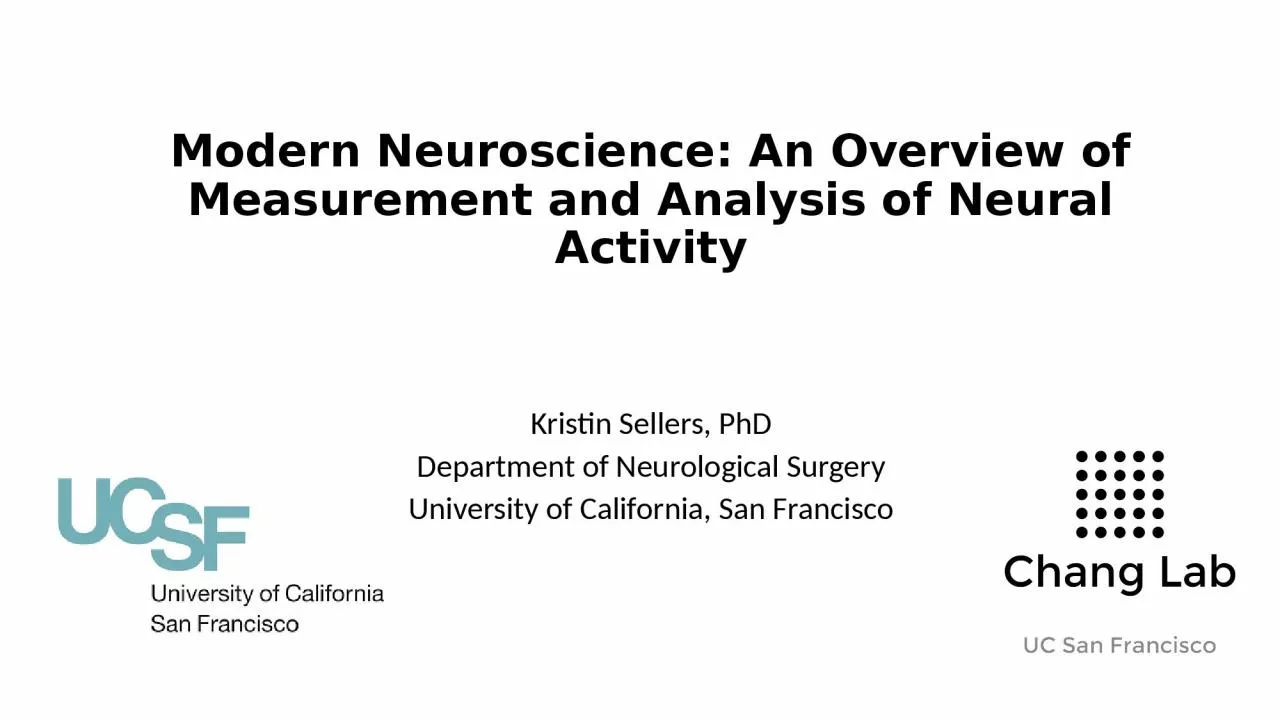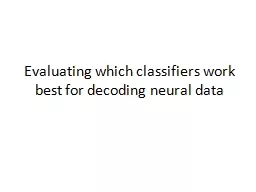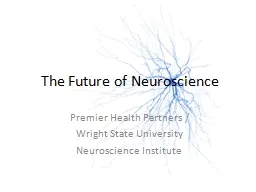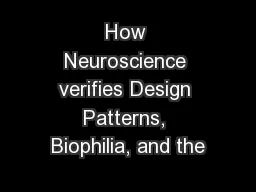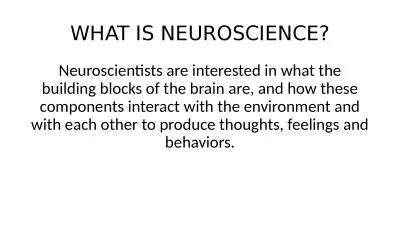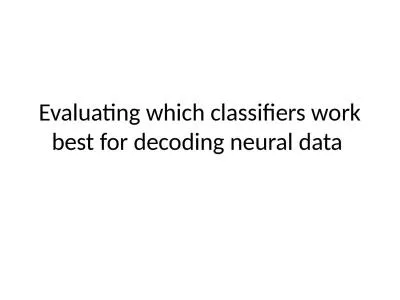PPT-Modern Neuroscience: An Overview of Measurement and Analysis of Neural Activity
Author : danya | Published Date : 2024-03-13
Kristin Sellers PhD Department of Neurological Surgery University of California San Francisco All coursework for a neuroscience PhDand some more in 1 hour Concepts
Presentation Embed Code
Download Presentation
Download Presentation The PPT/PDF document "Modern Neuroscience: An Overview of Meas..." is the property of its rightful owner. Permission is granted to download and print the materials on this website for personal, non-commercial use only, and to display it on your personal computer provided you do not modify the materials and that you retain all copyright notices contained in the materials. By downloading content from our website, you accept the terms of this agreement.
Modern Neuroscience: An Overview of Measurement and Analysis of Neural Activity: Transcript
Download Rules Of Document
"Modern Neuroscience: An Overview of Measurement and Analysis of Neural Activity"The content belongs to its owner. You may download and print it for personal use, without modification, and keep all copyright notices. By downloading, you agree to these terms.
Related Documents

